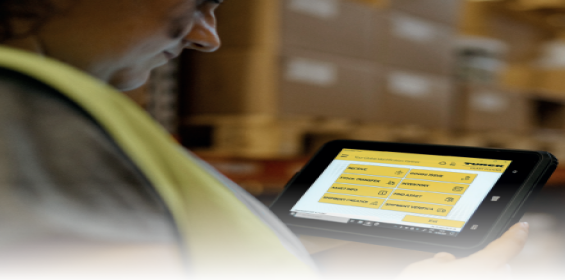RFID: is it more than a smart barcode?
Published: 18 May, 2022
While there are some similarities between RFID tags and barcodes, there are also significant differences. Tony Coghlan, Managing Director at Turck Banner explains how his company is specialising in harvesting these extra benefits.
We are now familiar with RFID tags for identifying and tracking items in factories. But, if they are implemented intelligently, they can generate much more data and value as part of a chain that tracks items from their original supplier, through an entire production process, and on to the eventual enduser.
The RFID (radio frequency identification) technology is well-established. It is often thought of as being a smart barcode, and there are similarities to barcodes in the way the RFID technology is applied – but there are also significant differences.
A barcode is a fixed reference number that is read using a laser or camera. A direct line-ofsight is required between the reader and the barcode. The code must be presented to the reader within an angle of about 70 degrees and, typically, only one code can be read at a time.
An RFID tag is powered, identified, read and written using radio waves. Each tag has a unique identification number and can also hold up to a few kilobytes of re-writeable data. Tags can be read from a distance of more than 3m, can be in any orientation, and hundreds of tags can be read at the same time.
Short-range RFID read/write heads can be used where precise positioning of a product is required – such as tracking a vehicle along a production line. Long-range read/write heads can see multiple tags simultaneously, broadening their use considerably. For example, it is possible to read a pallet-full of components, each with its own RFID tag, in one pass without needing to unpack the pallet.
While the RFID technology is well-proven, the real challenges and advantages come in how it is implemented. A good implementation has to cope with errors to maintain reliability and accuracy. For example, it is possible to identify stray tags that have become detached from a component. And a well-implemented RFD installation can determine whether tags are on one specific pallet, not adjacent pallets
Although RFID tags can be treated as isolated products, far greater value is possible if they are treated as part of a larger infrastructure, spanning not only an entire organisation from input to output, but also encompassing a complete value chain beyond a company’s premises, from suppliers to endusers.
In one recent installation, for example, RFID’s multi-read capability was used to inventory complete shipments of sub-assemblies as they arrived at a factory. The individual subassemblies were then tracked through the production process until they left the factory as complete assemblies.
Tracing an item throughout the production process in this way allows any faults in the final product to be traced back to the original suppliers. Analysing data gathered from many points along the production process can highlight where improvements can be made.
In this example, tags were added to bulk containers of sub-components and this data was added to each assembly as it passed through the production process, further enhancing traceability. This allowed real-time production statistics to be generated. The initial investment was based on the time saved, not on having to count and process the sub-assemblies as they arrived at the factory. Gathering the data on traceability and production.
********************************************************************************************************
Turck has set up a dedicated RFID division called Turck Vilant in Sweden. The division employs more 20 programmers with the expertise required to maintain the accuracy and reliability of RFID data and to integrate tagging systems into existing infrastructures, MES and ERP systems, and the cloud. The business manages projects from design concept to implementation and beyond, supported by around-the-clock service agreements.
********************************************************************************************************
https://twitter.com/TurckBannerUK
https://www.linkedin.com/company/turck-banner-ltd/







